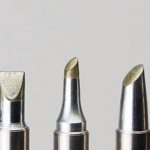
While mass reflow soldering efficiently joins most joints, many boards still demand selective hand soldering or rework. However, manual operations introduce variability in quality. Different technicians exhibit inconsistencies in technique and judgment. Automating hand soldering processes with precision tools and fixtures thus improves repeatability while reducing defects and enhancing ergonomics. Let’s examine the motivations, approaches, and equipment enabling automation to bring discipline to delicate manual assembly.
Challenges of Manual Soldering
For large-scale consumer electronics, solder paste printing and infrared/convection reflow reliably produce billions of joints. However, not all devices suit mass production. Low volumes, high mix, quick changeovers, large components, late-stage modifications, and repairs create needs for hand soldering.
For instance, CERN satellite instrumentation undergoes frequent sensor upgrades after testing. Physicists rework complex, expensive detector boards rather than discarding them. Other applications like clinical devices require meticulous lead forming and joint inspection unachievable in bulk. Such low-volume, high-value assemblies depend on manual soldering dexterity.
Yet inconsistent operators and workstation ergonomics affect quality. Individuals work at different paces with various motion trajectories. Fatigue, distractions, or drifted process parameters also contribute errors. Common defects like cold joints, bridging, or lifted pads reflect uneven practices. Just minutes of poor posture daily accumulates into strains or cumulative traumas. Automation aims to uplift manual soldering consistency and ergonomics.
Automated Hand Soldering Tools
Specialized systems lend automation advantages to manual joining. Low-volume assembly equipment is scalable, reconfigurable, and adaptable. For example, ERSA’s MicroSelective soldering systems use miniaturized solder pot and iron combinations for selective component heating. Programmable logic drives motion and dispensing tailored for each board.
Machine vision also closes control loops. SensoPart’s FUSION system visually guides an articulated arm. Onboard cameras provide real-time joint inspection while algorithms plan ideal paths avoiding collisions. The platform learns optimal sequences after limited training. AI then provides constant feedback ensuring uniform results.
Likewise, tools outfitted with sensors aid precision and traceability. Hakko’s FX-951 iron lets users set exact temperatures and records tip motion during soldering. Data can validate workmanship across technicians. Other products like PACE’s fume extractors actively balance vacuum pressure and arm forces for smooth maneuvering in tight spaces. Intelligent sensing enhances the human-machine balance.
Adaptable Fixturing Options
Specialized fixturing allows automating hand soldering of small batches. Modular fixtures reconfigure quickly through integrated locating pins, clamps, and pallets. For example, Circuit Technology’s Centipede and Spider platforms assemble multiple boards in panels. Ideal for 10-100 unit volumes, these fixtures reduce changeover efforts.
Flexible clamping also accommodates varying product geometries. Energetic’s AutoTwist electric screwdrivers provide programmable torques for reliable fastening without overstressing parts. Similar precision is attainable for soldering fixtures. Elma’s rotary clamps rotate 360 degrees to access joints from any angle while holding boards steady.
Even for existing equipment, augmenting hardware improves repeatability. ASYS added a third servo-driven axis to Heller’s hand soldering stations for consistent z-motion. Programmable fiducials and tweezers guide robotic positioning for microscopic components. Creative fixturing advances help manual stations achieve automated precision.
Optimizing Programs Through Simulation
To maximize efficiency, soldering programs can be iteratively refined in simulation before physical deployment. Virtual Commissioning tools recreate complete workcells for prototyping. Technicians test motion sequences to identify optimal paths avoiding collisions while minimizing cycle times.
Software company MAPLESIM lets users integrate kinematic, dynamic, and machine vision models to assess planned automation behavior thoroughly. Robotic soldering reaches new dexterity thresholds when honed virtually first. Engineers also gain data to quantify potential improvements over manual methods.
Likewise, simulating human variabilities builds resilience. By introducing simulated fatigue or neural motor noise, control policies adapt to maintain performance. Such digital twin capabilities will grow production reliability for automation across scales. Soldering automation leverages simulation to augment technicians’ skills.
Consistency Within Reach
In summary, automating precision hand soldering delivers multiple benefits. Intelligent servo control, sensing, and adaptive fixtures boost repeatability beyond human capabilities. Simulation-based programming optimizes robotic motions maximizing quality and ergonomics. Teaming human craftsmanship with automation unlocks new versatility to enhance manufacturing.
As Henry Ford once noted on automation, “We do not have a man tighten a bolt twenty times, but provide a jig to do it.” Similarly, automated hand soldering platforms elevate workers’ contributions instead of replacing them outright. Technicians enable the automation, while automation prevents the variability. Such symbiotic advancement will underpin electronics assembly consistency as products demand ever-greater miniaturization and complexity.















